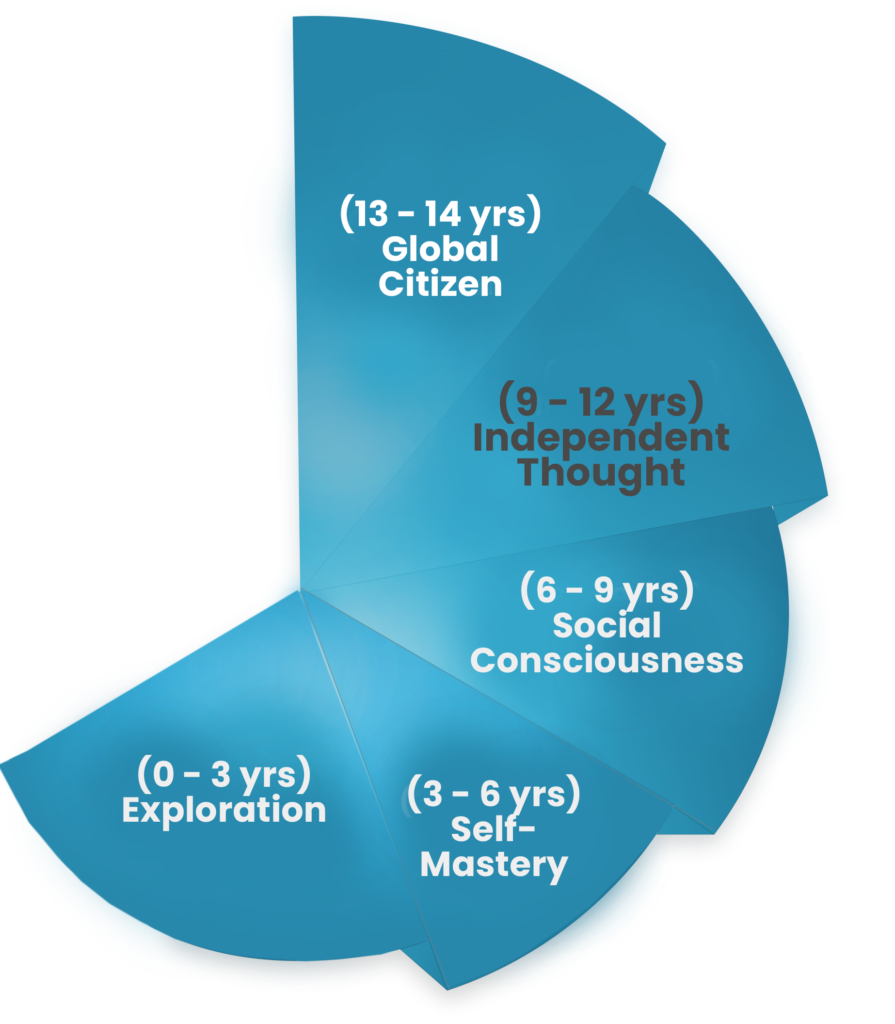Upper Elementary
(9 - 12 years)
Upper Elementary
Building upon the hands-on materials of lower elementary, children begin to work in the abstract, finding patterns across subject areas and bringing order to various disconnected facts. Children at this age want to know why the Universe is as it is, how it came to be that way, and are ready to dig into a deeper layer of understanding. Lessons are meant to answer those questions, develop the critical-thinking habits to find their own answers, and to spark curiosity.
Schedule
Early Morning: 7:15 to 8:15am
Full Day: 8:30am to 3:15pm
All Day: 8:30am to 6:00pm
All classes are Monday through Friday
What we offer
*Writing – Writing Process, typing, 5 *Paragraph Essays, Google Drive and STyles.
*Reading – Research , Book Discussion and Book Report.
*Grammer- Sentence Analysis, Word Origin, Mechanics.
*Whole numbers and Numerations, Multiples, Problem Solving Skills, Fractions, Decimals, Measurements, Ratios and Percents, Statistics and Probability, Graphs, Algebra Readiness.
*Geometry- Points, Lines and Angles, History , Quadrilaterals and Polygons, *Solid Geometry.
*Physical Geography. Political Geography. Economic Geography. Composition of Earth. Solar System.
*Review of Timelines. Study of civilizations. American History.
*Simple Machines. Work of Wind. Food Chains. Atoms & Molecules. Genetics.
Human Anatomy. Ecology. Study of Great Scientists. Science Experiments.
*Practicle Life Activies begin to take the children outside of the classroom through community service projects.
*Practical life activities teach:
• A means to an end
• Cultural awareness
• A sense of success
• Organizational skills to plan and run fundraisers, to coordinate school-wide events and programs, food drives, involvement in local and global charities and organizations
• Gardening skills to plant and harvest produce
• School outreach, role modeling and mentoring
• Building projects such as sets, greenhouses, indoor and outdoor environments
• Cottage enterprises such as salad bars, lemonade stands, dances, and holiday stores.
*Planning functions.
*Increasingly advanced sensory activties continues such as –
*Discrimination of length, width, and height
*Discrimination of volume
*Discrimination among color tones
*Discrimination among geometric shapes for shape and relative size
*Discrimination among solid geometric shapes by sight and touch
*Solving of complex abstract puzzles in three dimensions
*Discrimination of intensity and nature of sounds
*Practicing responsible disposal of waste by reducing, reusing, and recycling. Composting organic waste to fertilize our gardens.
*Encouraging families to provide no-trash lunches.
*Creating and maintaining community gardens: vegetable beds, butterfly garden, rain garden, flower beds, peace garden.
*Maintaining our Rain Garden.
Wildlife study. Bird watching and care.
*Maintaining our Certified Wildlife Habitat.
*Move in different directions at varying speed; locomotor skills such as hop and gallop on non-preferred foot, slide, travel in relationship to various objects (over, under, behind, through).
*Circus arts: balancing, acrobatics, juggling, unicycle, stilts, german wheel, clowning
*Skills to develop strength, endurance, and flexibility.
*Dancing and rhythms.
*Art and Music is integrated into everyday activities.
*Activities to to develop a response to rhythm and melody, as well as a love and appreciation of music .
*Art projects reflect a current area of study.



